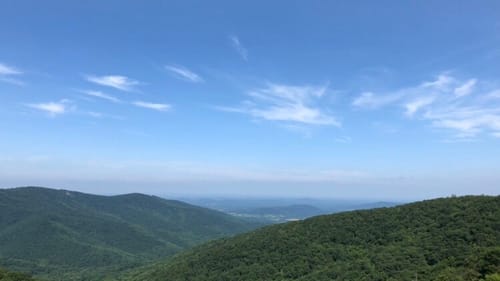Stay in the Loop
BSR publishes on a weekly schedule, with an email newsletter every Wednesday and Thursday morning. There’s no paywall, and subscribing is always free.
The PR chronicles
The art of public relations: A handy guide to what not to do

One of the most bizarre experiences I ever had with a public-relations staffer happened early in my career, when an editor asked for a preview of a play opening on a Philly-area stage. Easy, right? Not when the PR contact goes up in flames.
Somehow, after I reached out to him about the preview and scheduled a visit with the stage director, the PR guy developed the idea that I was working on an in-depth, multipart series to promote their show. When he realized I was actually working on one brief preview, he became upset.
In multiple voice messages and emails, he said I was no longer welcome at the theater and suggested that in future, all arts journalists should be required to sign advance contracts with any organization they’re covering, outlining what will be written “so nobody will be disappointed.”
Somebody must’ve gotten to him, because a few hours after I relayed these shenanigans to my editor and moved on to another pitch, the man called me again to say that the theater did want the coverage after all. They were inviting me back.
Thanks, but no thanks.
Everyone’s accountable
PR staffers have it hard—especially in the arts, where space in professional media outlets is getting scarcer than parking in South Philly. I’m accountable to the BSR team and readers, and PR folks are accountable to their organizational leaders and clients. I started out in PR myself, and that gives me even more respect for my colleagues on both sides of the press table. I want to make everyone’s job easier and offer a window into the biz for anyone who’s curious about how each week’s crop of new stories at BSR came to be—or didn’t.
So, in the spirit of a better day for everyone in arts media, here are some tips for my esteemed PR colleagues, from my side of the screen.

Back to basics
First, if you’re making the effort to pitch, spell my name right—especially if we’ve already exchanged emails. I’m not handing you a Rubik’s Cube. My first name has six letters in it (and three of them are "A"), and it’s in the signature on my last email. Show me you can make this effort before I expose one of my writers to you.
It also doesn’t hurt to know the professional names of the artists you’re promoting. The following is a direct quote from internal BSR communications on a recent show: “The way it was written in the story is what the staffer told me from the show's materials onsite; something different is on the [venue] website; and the whole can of worms opened in the first place because the curator gave the writer a third version of the name.”
Additionally, here is a partial list of basic questions that, in my personal experience, have flummoxed PR people.
- Where is this happening?
- What time does it start?
- What are your headlining artist’s pronouns?
- How can my readers get tickets?
If your press release does not answer these questions, please take a few minutes before you pitch me.
Staying organized
Another pro tip: Don’t pitch me at 5:42pm on Friday, inviting me to an event happening on Saturday. Your assumption that my weekend is wide open and available for work makes me feel unpopular and personally defensive—besides the tipoff that you’re completely disorganized.
If you’re not working in-house (more and more Philly organizations are farming out their PR to local firms and contractors these days), please arrange some semblance of communication with the organization’s frontline staff once we’ve confirmed I’m covering an event. I promise it’s not helpful for anyone when I show up and the staff look as if they have never even heard of the concept of the media, let alone my name or why I’m there.
Getting the picture
Have you heard? Images are a thing. You might think the most time-consuming thing my writers and I do is write and edit. You’re probably correct, but chasing down images is an extremely close second. If you’re making a pitch and we inquire about photos, don’t make us feel like we’re asking for a real-time demo of the Higgs boson. Don’t send a batch of unlabeled photos and then kick off a whole new round of emails tracking down caption and credit info (I’m sure the photographers agree that these pictures did not just spring magically into being). And for God’s sake, don’t give me photos on a CD. It’s 2019. I will turn this car around right now.
But every time you send me a link to a digital folder with a selection of high-quality, properly captioned and credited photos, I am this close to marrying you.

Being on the radar
Finally, my dear colleagues, be ready for me to say yes. Don’t suggest a source who will take weeks to track down and then forget the scheduled phone call. Don’t pitch a story and then tell me your clients don’t want to be interviewed. Don’t make me meet you for coffee before you say you’re not actually announcing the new location yet and that the details are under indefinite embargo. Don’t be like the woman who pitched me repeatedly for weeks and then, when I agreed, replied that she would have to think about it because of “privacy concerns.”
Part of the reason I’m thinking about this is the email I got last week from the PR coordinator of the theater I mentioned at the start of this piece. “We would be most gratified if you could put our theater onto your radar,” he wrote. Trust me, you’re on the radar. But probably not in the way you’d like.
PR is like any other business, including journalism: full of people who are a joy to work with—and then the rest of them. I’ll do my part, with courtesy, accuracy (with accountability if I err), and compelling stories. I’ll see everyone in my inbox tomorrow.
Sign up for our newsletter
All of the week's new articles, all in one place. Sign up for the free weekly BSR newsletters, and don't miss a conversation.

 Alaina Johns
Alaina Johns